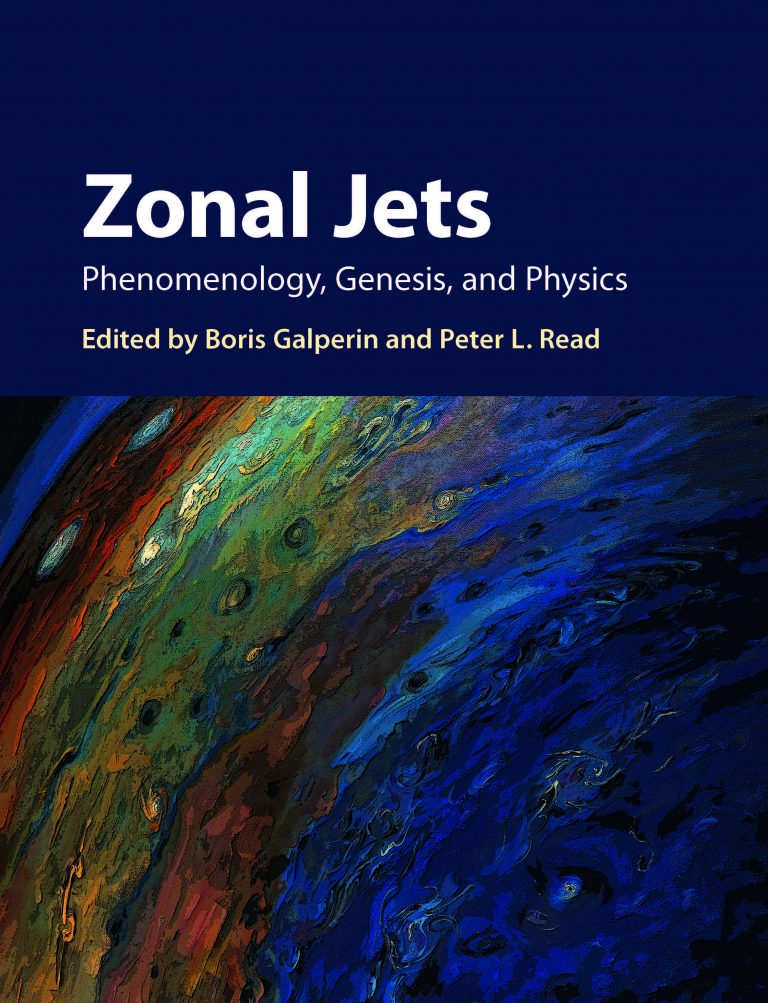Written by Kristen Kusek, Former Communications Director for USF CMS
ST. PETERSBURG, FL – Anyone who has experienced headwinds or tailwinds on a plane traveling through the jet stream, or admired Jupiter’s majestic cloud bands, is familiar with zonal jets—even if you didn’t know it. The large-scale, concentrated currents powering these bands move in an east-west direction and are an important part of the atmospheric circulation. Scientists have studied them since the dawn of the telescope centuries ago.

Zonal Jets: Phenomenology, Genesis, and Physics can be purchased here
Starting in the mid-1970s scientists suspected that these jets probably existed in
the ocean as well, albeit as weaker currents than the powerful Gulf Stream in the
North Atlantic or the Kuroshio Current in the North Pacific.
But they couldn’t find them.
It was only 15 years ago, nearly 30 years after those initial hunches, that a team led by Boris Galperin, Associate Professor at the USF College of Marine Science, not only proved their existence using computer simulations but suggested that zonal jets are in fact ubiquitous ocean features governed by the same laws of physics as the Jovian jets.
Moreover, they proposed a taxonomy of zonal jets in terms of a single parameter they called the zonostrophy index. This index characterizes the physics and strength of the jets that range from weaker oceanic ones to extremely strong jets on Jupiter, Saturn, Uranus, and Neptune.
“Even though the oceanic jets are weak, they are among the most fundamental building blocks of ocean circulation,” said Galperin.
![Twins: Jupiter’s atmosphere and Earth’s ocean? See how the composite view of the banded structure of the disk of Jupiter (a) looks similar to the zonal jets at 1000 m depth in the North Pacific Ocean (b). The North Pacific zonal jets were averaged over five years of a 58-year-long computer simulation performed by Galperin and his team, which they published in 2004 in Geophysical Research Letters [https://bit.ly/2IG7uYM]. The Jupiter image was taken by NASA’s Cassini spacecraft on December 7, 2000 (credit: NASA/JPL/University of Arizona)](/marine-science/news/images/twins-jupiters-atmosphere-and-earths-ocean.jpg)
Twins: Jupiter’s atmosphere and Earth’s ocean? See how the composite view of the banded structure of the disk of Jupiter (a) looks similar to the zonal jets at 1000 m depth in the North Pacific Ocean (b). The North Pacific zonal jets were averaged over five years of a 58-year-long computer simulation performed by Galperin and his team, which they published in 2004 in Geophysical Research Letters [https://bit.ly/2IG7uYM]. The Jupiter image was taken by NASA’s Cassini spacecraft on December 7, 2000 (credit: NASA/JPL/University of Arizona)
Zonal jets put their stamp on the dynamics of the mid-ocean. They play a key role
in transferring energy, water mass, salt, heat, solids, gases, and even fish and other
sea life across huge swaths of the ocean basin. Understanding and quantifying them
is critical to improving weather and climate models, as well as our ability to forecast
hurricanes, said Galperin.
Just as you’d be hard-pressed to understand human blood circulation without comprehending the role of the capillaries in addition to the larger arteries and veins, you cannot understand global ocean circulation without appreciating zonal jets in conjunction with the major boundary current systems.
“Paradoxically, we know more about the jets in outer space than we do in our own ocean,” Galperin said. And there’s another problem, too—one Galperin has been working on for the last six years.
“We realized that we were trying to conquer the world of jets by building a Tower of Babel,” said Galperin. Scientists who study these systems in outer space and in the ocean were often using different terms to describe similar phenomena. In addition, researchers working in different areas were developing tools of research that were yet to be brought across disciplinary boundaries. The result was a hairball of publications and presentations that needed serious untangling.
So Galperin went to work.

The zonostrophy index developed by Galperin and his team characterizes the physics and strength of zonal jets and is also useful for laboratory experiments. The index value is about 1.7 for the oceans and 5 for Jupiter – and one of the best places to study this is at The University of Torino in Italy, home to the fast rotating platform pictured here. However, even this fast platform could only attain zonostrophy index values of about 2, which signifies the threshold at which the structures can be identified as zonal jets versus eddies, Galperin said. Photo Credit: EuHIT
In 2011, with initial support from the International Space Sciences Institute (ISSI)
in Bern, Switzerland, he initiated an effort equivalent to assembling an Olympic team:
corralling 70 of the world’s experts in meteorology, oceanography, planetary physics,
and other disciplines to write a comprehensive book about zonal jets. The product
of this effort, Zonal Jets: Phenomenology, Genesis, and Physics, will be published
by Cambridge University Press on February 28th. Galperin and Peter L. Read, Professor
at the Department of Atmospheric, Oceanic and Planetary Physics at Oxford University,
serve as editors of the book, which should appeal to a broad audience including physical
oceanographers, atmospheric scientists, planetologists, astronomers, experimentalists,
physicists, applied mathematicians, fluid dynamicists, and more.
The effort was buoyed by improvements in high resolution satellite data collection by NASA and the European Space Agency (ESA) as well as the ability to process it. These research hallmarks are critical to digging into the heart of the physics of zonal jets in the ocean and other planets such as Saturn whose iconic rings are, you guessed it, also related to the dynamics of zonal jets.
“The book serves as a tourist guide that fuses several decades of highly compartmentalized information,” said Galperin, who hopes it propels the science of planetary turbulence into its next phase of exploration.
He and Read have already been invited to submit a “Perspectives” article to the scientific journal called Physics of Fluids in response to the book’s publication.
For more information, visit www.cambridge.org/9781107043886 or email Boris Galperin directly at bgalperin@usf.edu.
